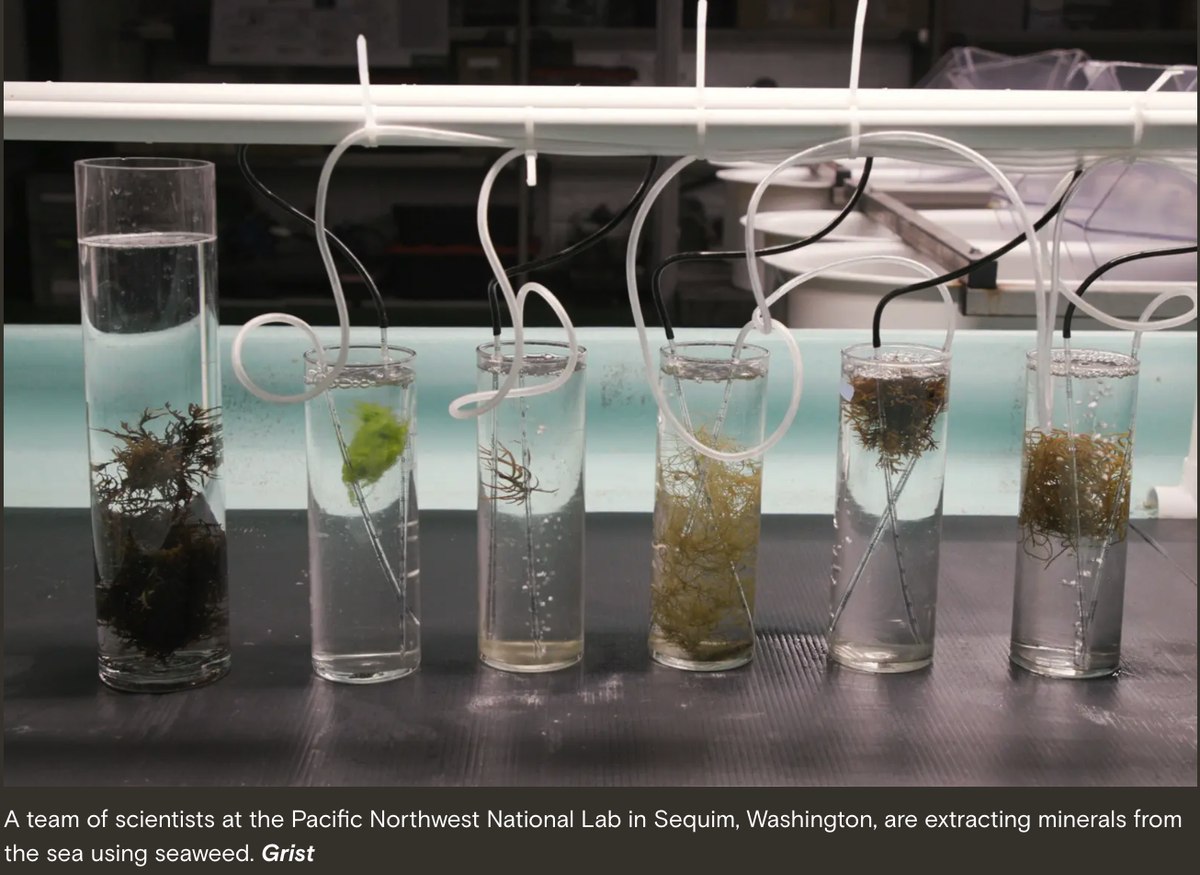The Green Page:

The Weirdest Ways Scientists Are Mining For Critical Minerals, From Water To Weeds
Not all critical minerals need to come from digging up the earth.
Since ancient history, mining has been a dirty business. While we’ve developed new tools, chemicals, machines, and techniques, most of today’s mining still boils down to digging in the dirt. As the world ramps up production of the technologies it needs to transition away from fossil fuels, this widespread disturbance of the Earth and its ecosystems will continue in the accelerating search for critical minerals like lithium, cobalt, nickel, and rare-earth elements.
But what if there were another way? Or, better yet, many other ways. After all, the minerals we need aren’t just buried underground. As the basic building blocks of much of the world’s matter, these elements have accumulated everywhere: in plant life, in the ocean, in our industrial waste, and even in rocks hurtling through outer space. While the ability to extract sufficient minerals from these sources to power the energy transition remains a long way off, scientists and entrepreneurs are working diligently to determine if each of these sources can compete with traditional mining methods. In the process, they’re also raising challenging questions about how far we’ll need to stretch human ingenuity to meet the challenge of the energy transition — and just how clean even the most advanced type of “mining” can ever be.
Mining our water
For more than a century, eccentric scientists have dreamed of wringing precious metals from the Earth’s most vast resource: its oceans. The seas contain millions to trillions of metric tons of gold, cobalt, and other elements, including 17,000 times more lithium than the world’s terrestrial reserves. Unlike more controversial forms of deep-sea mining that require dredging the ocean floor, these dissolved minerals can be extracted directly from the ocean water itself.
In the 1920s, German chemist Fritz Haber devised a plan to extract gold from seawater in an effort to repay Germany’s war debt. But unlike Haber’s other groundbreaking science — he invented synthetic processes that more or less led the way to both modern agriculture and chemical warfare — this effort yielded no real fruit, even after years of research in secret labs on German ships. In the decades since, the United States, the United Kingdom, and Japan have all studied seawater as a potential source of uranium, but none of these efforts have yielded widespread success. The basic problem has always been that the ocean’s elements are dispersed so broadly that extracting them often costs more than the market value of the minerals.
Today, in the face of a looming critical mineral shortage, scientists are renewing their efforts to overcome this hurdle. They’ve turned to an unassuming source: algae. Scientists at the Pacific Northwest National Laboratory in Sequim, Washington, are investigating the potential of a type of seaweed that can naturally concentrate minerals at levels thousands of times higher than those found in surrounding seawater.


